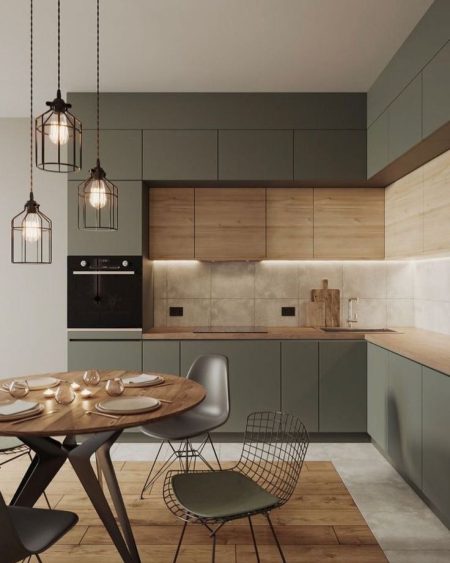Home improvement loans generally aren’t eligible for federal tax deductions, even when used for eligible renovations or property improvements. Unlike home equity loans, which can be tax deductible, home improvement loans are an unsecured debt, rendering them ineligible for tax credits.
Home improvement loans vs. home equity loans
Although home improvement and home equity loans may sound similar on paper, and can be used for the same purpose, it’s important to understand the differences between the two categories.
If you turn to a home improvement loan to finance your next project rather than an equity loan, you could be leaving thousands of dollars in tax deductions on the table.
Home improvement loans
A home improvement loan is offered by online lenders, banks or credit unions and functions as a personal loan. Borrowers need to meet the lender’s requirements to get approved and then will receive the funds in a lump sum.
Most lenders offer repayment timelines between two and five years and can come with fixed or variable interest rates that are based on your creditworthiness. In short, home improvement loans are unsecured personal loans specifically marketed toward borrowers looking to finance renovations.
Unsecured loans or debts (like personal loans for home improvements) aren’t secured by a house or property. Therefore, they’re not eligible for the tax credits, even if the funds are used for eligible projects or improvements.
Home equity loans
Home improvement loans and home equity loans are in two different categories for a number of reasons. For one, home equity loans are secured – backed by the home – and allow you to tap into the equity you’ve built up in your home over time.
Also called a ‘second mortgage,’ these loans and lines of credit tend to have stricter usage restrictions and are higher risk. If you fail to make the payments, you run the risk of losing your home. Home equity loans and lines of credit (HELOCs) are a few of the most popular secured debts and qualify for tax deductions.
Home loans that are tax deductible
As a rule of thumb, if the loan isn’t backed by your home or property, it doesn’t qualify for the tax interest deduction. However, if you’re looking to finance a specific renovation, consider a home equity loan or line of credit.
Home equity loans
A home equity loan allows you to borrow against the equity – the portion of the home you’ve already paid off – built up in your home. They typically have fixed interest rates and repayment terms of up to 30 years, but most lenders allow the borrower to choose a repayment plan.
How much you can borrow will depend on the lender and how much equity you’ve built up over time. However, many lenders cap the amount you can borrow between 80 to 85 percent of your home’s equity.
If used for projects to substantially improve your home, you may be able to deduct the interest from your loan on your taxes, even if only a portion of the balance went toward the home.
Home Equity Lines of Credit (HELOCs)
HELOCs also allow you to borrow against the equity you’ve built up over time, but rather than dispersing the amount in a lump sum, a HELOC allows you to withdraw funds over time.
Borrowers can take out how much they need, when they need it. When used for eligible projects, the interest is eligible for a tax credit. Because of this, HELOCs can be a great way to finance an ongoing home improvement project.
Deduction-eligible home equity loan uses
Not all home improvement projects qualify for a tax deduction, even if you use a home equity loan for financing. It’s not likely that you’ll see any interest deducted for smaller projects, like updating your kitchen cabinets or installing a patio.
The IRS has specific perimeters around what qualifies as eligible. Check the specific home improvement details and deadlines before banking on a significant return this tax season.
Home office deductions
If your residence is your primary work space, then you may be able to deduct certain home office improvements or purchases. This applies to homeowners and renters residing in any type of home or utilizing a free-standing structure for their business. Employees will not qualify, even if they meet the other requirements.
The term “home office” is more of an umbrella term as personal property also may qualify. Among others, Boats, RVs, mobile homes and unattached garages, studios or barns fall under this category if used strictly for business.
In order to qualify, the IRS states that:
- You must use a specific part of your home strictly for business purposes.
- Your home (or structure) is your principal place of business, or if administrative tasks can only be performed on your property.
If you work on a hybrid schedule and only work from home a few times a week, then it likely won’t qualify. “If the use of the home office is merely appropriate and helpful, you cannot deduct expenses for the business use of your home,” an IRS resource page reads.
Medical-related home renovations
The installation of specialized household equipment for medical care to support you, your spouse or your dependent may qualify for a tax break, but only if the additions fall within certain parameters.
For example, the value of the property must not be increased by the renovation for the entire cost to be considered a taxable medical expense. Such improvements may include:
- Widening hallways and doorways
- Adding ramps or lifts to accommodate for a wheelchair
- Modifying stairwells
- Lowering (or modifying) kitchen appliances, cabinets or household electrical outlets
Any amount paid (or borrowed) for medical upkeep and operation also qualifies as long as the funds are used strictly for medical purposes, as well as the installation of a specialized plumbing system for a person with a disability.
If you’re unsure as to whether your renovations qualify, consider the primary function of the addition and the potential value-add it gives your home. “Only reasonable costs to accommodate a home to your disabled condition are considered medical care,” the IRS tax resource reads. “Additional costs for personal motives, such as for architectural or aesthetic reasons, aren’t medical expenses.”
Energy efficient instillations
If you’ve installed energy efficient equipment – think solar panels, energy efficient windows, skylights and doors, biomass equipment or small wind turbines – then you may qualify for a tax break on your next return.
Also called the residential clean energy property credit, qualifying eco-friendly renovations made after Dec. 31, 2021 and before Jan. 1, 2033 are eligible for a tax credit totaling up to 30 percent of the equipment costs. Any expenditure made in 2033 can result in a 26 percent maximum tax credit and a 22 percent maximum credit for property placed in 2034.
What constitutes a qualifying cost when calculating the deduction percentage will vary based on the type of eco-friendly equipment you’ve had installed. There’s also a $1,200 aggregate yearly tax credit maximum for home components, energy audits and energy property, while qualifying heaters, stoves and boilers have a separate $2,000 limit.
Which is better: home equity or home improvement loans?
While there isn’t a ‘right’ answer as to which product is better, there are projects that are better suited for certain projects. For example, home improvement loans are best for smaller projects that don’t qualify for tax deductions, especially if you don’t have significant home equity built up.
For larger and longer renovations, HELOCs may be the better option for qualifying borrowers. Home equity loans are well suited for long-term homeowners with less strenuous projects that qualify for tax credits.
Read the full article here









